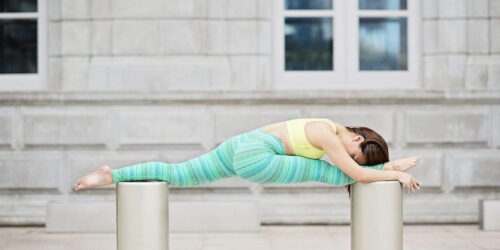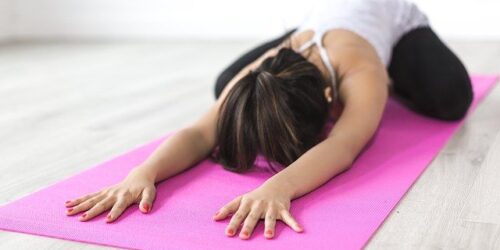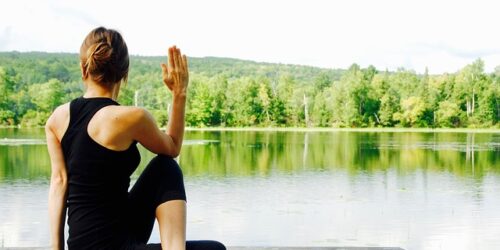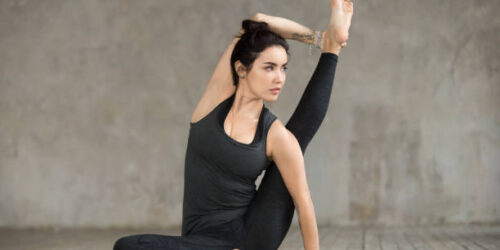What Is Hot Power Fusion Yoga? Definition & Benefit & Have A Try
Let’s start by defining hot power fusion yoga.
A true blend of balance, core strengthening and flexibility, Hot Power Fusion combines the meditative, detoxifying qualities of hot yoga with the intensity of power yoga to help you deepen your yoga practice.
For more information, continue reading.
Table of Contents
What Is Hot Power Fusion Yoga?
Yoga that fuses hot and powerful vinyasa styles is referred to as hot power fusion. It focuses on postures that open the hips, shoulders, and spine and uses music to energize the participants. This teaching method is appropriate for students at all levels and promotes mindfulness and detoxification. Before signing up for a Hot Power Fusion class, it’s critical to understand your skill level. Prior to attending HPF classes, you should also practice hot yoga.
In a 75-minute class called Hot Power Fusion, the best aspects of Power Vinyasa and Hot Yoga are combined. Both traditional and Power Vinyasa poses are used in the class, which also places a strong emphasis on breathing in a way that links movement to the heart. The same time that it is calming and difficult. With 160 studios nationwide, its popularity has skyrocketed in recent years.
You will sweat and feel refreshed after an intense workout that combines Hot Yoga and Power Yoga. Hot yoga’s meditative elements are combined with Power Vinyasa’s strenuousness in this class. Standing poses, balance poses, and Yin postures are all included. A relaxing and energizing meditation session is included at the end. It’s a great workout for your body and mind even though it’s more difficult than standard hot yoga.
Benefit Of Hot Power Fusion Yoga
The increased range of motion is the primary advantage of Hot Power Fusion yoga. Although the heat enables you to go deeper into the poses, it’s important to stay within your limits. You should begin with a low-intensity class to get accustomed to the hot environment in order to prevent injuries. If you’ve never taken a yoga class before, it’s best to start with one that is less intense.
Try Hot Power Fusion Yoga
If you want to increase the depth of your yoga practice while still reaping the advantages of hot yoga, Hot Power Fusion is the perfect option for you. The temperature and humidity in the heated room at Corepower are between 90 and 105 degrees. To assist the body in adjusting, the class combines a variety of poses and passive holds. Newcomers are advised to start with a lower-level class. To ensure that your body is prepared for the intensity of the heat before taking your first hot power fusion yoga class, speak with a yoga instructor.
The term “Hot Power Fusion” refers to the fusion of hot and power yoga. The meditative elements of a traditional hot yoga class are combined with the intense and energizing elements of a Power Yoga class in this type of yoga. Over 100 degrees and 40% humidity are present in the Corepower studio. Prior to enrolling in more difficult classes, it is best to start with a less demanding class to get acclimated to the heat.
Yoga called “Hot Power Fusion” combines the heat of “power yoga” with “traditional” yoga. Participants can develop their practice in a secure yet demanding environment thanks to the two styles’ combination. It’s important to be aware that this style of yoga requires some familiarity with hot yoga in order to practice. You can enroll in a number of classes at the corepower studio to learn the fundamentals of this form of exercise. A hot fusion yoga DVD is also offered, which is a great way to discover the variations between these two approaches.
Consider taking a hot yoga class at Corepower if you’ve never tried it before. Deepening your practice and incorporating meditation into your daily routine are both made possible by the heat. You can even pick a beginner’s class without heat and move up to a more advanced level as your practice develops. You should think about what you are comfortable with, but the decision is ultimately yours. See more about What Is Trap Yoga?
Why The Influence Of Bikram Yoga?
The inventor of the Bikram Yoga sequence, Bikram Choudhury, has been a lifelong yoga practitioner. At the age of 18, he had gotten into competitive weight lifting and had a major weight lifting accident that left him with shattered knees. His severe injuries led to predictions that he would never be able to walk again, and there was even speculation that he might need to have his legs amputated.
In India, instead of visiting a doctor, sick people would seek the advice of a guru, who would advise them on what to eat and what not to eat, as well as the yoga poses they should practice every day to treat their condition. Bikram, who had been a lifelong practitioner of yoga, returned to his teacher after the incident in the hopes of recovering. Bikram asserted he fully recovered from his knee injury after working with his guru consistently for six months.
His ability to recover motivated him to train as a yoga instructor. However, based on the original 84 postures he learned from his guru, particularly the postures that helped Bikram heal his knee from his weight lifting injury, Bikram developed a sequence of 26 postures and two breathing exercises that were designed to help treat as many people at once.
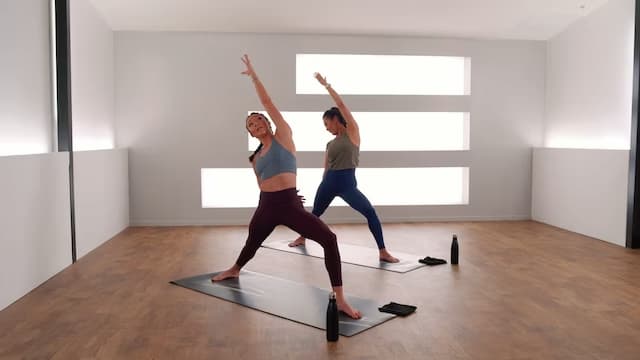
Examples Of The Style
The Hot Power Fusion class is provided by CorePower Yoga, a facility with 160 locations across the country. This class combines the movement and rigor of Power yoga with the feel and heat of Hot yoga, which is performed in a space that is over 100 degrees and at least 40% humid. You’ll flow through Sun Salutations, open your hips in Warrior poses, balance in poses like Eagle and Stick, strengthen your core, and open up your hamstrings and shoulders in more passive holds at the end of class.
The Yoga Joint in Fort Lauderdale offers a Hot Fusion Yoga class as well. A well-known yoga teacher named Paige Held created the heated, 75-minute class in Lauderdale, Florida, with her colleagues. The goal of the class is to flow through Sun Salutations done in the vinyasa style, hold balancing poses, sit in Yin poses, and finish with meditation. The course aims to inspire, de-stress, and de-kink students.
Expect Things
As the class’s name implies, you’ll practice in a warm environment. Bring a yoga towel to absorb the sweat and dress appropriately. These towels are thin, made of wicking microfiber, and have grippy nubs to stay put on your mat. The best clothing for yoga is fitted, as baggy T-shirts hang awkwardly and buttons or zippers irritate the skin. Cotton is inferior to synthetic fabrics that can withstand perspiration.
Before beginning a Hot Fusion class, you might benefit from having some prior yoga experience. Before going to Hot Fusion, take a Hatha class that combines a vinyasa practice with a gentle expression of the poses. These classes merely provide you with the necessary groundwork to feel confident and comfortable in your practice before taking on a new challenge.
For the most part, you don’t need any prior knowledge of traditional hot yoga to take part in Hot Fusion; in fact, it can be a great introduction for you to determine whether you enjoy it hot or not.
The End
The article concentrated on explaining hot power fusion yoga.
What is hot power fusion yoga, exactly, and how well do you know it? Do you intend to practice hot power fusion yoga?
Please post a question in the comments if you have any.
Regarding your reading, I thank you.

